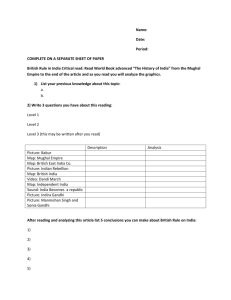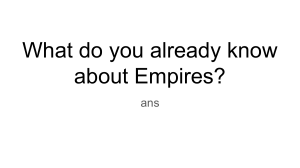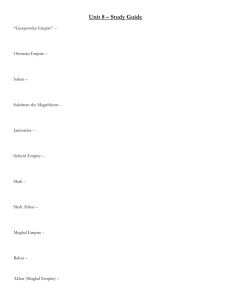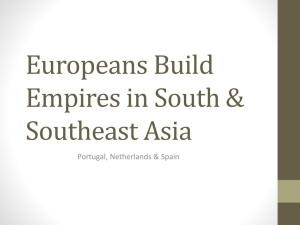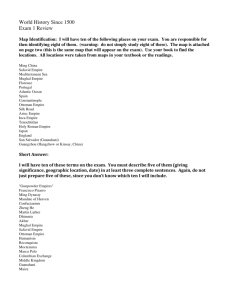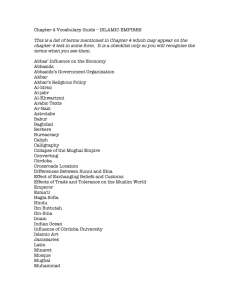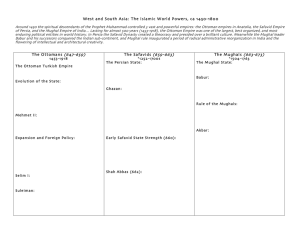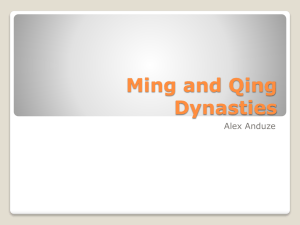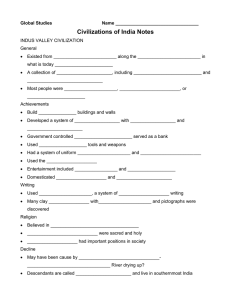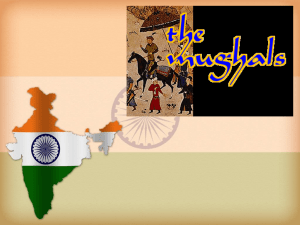ASIA AND THE WORLD (1450
advertisement
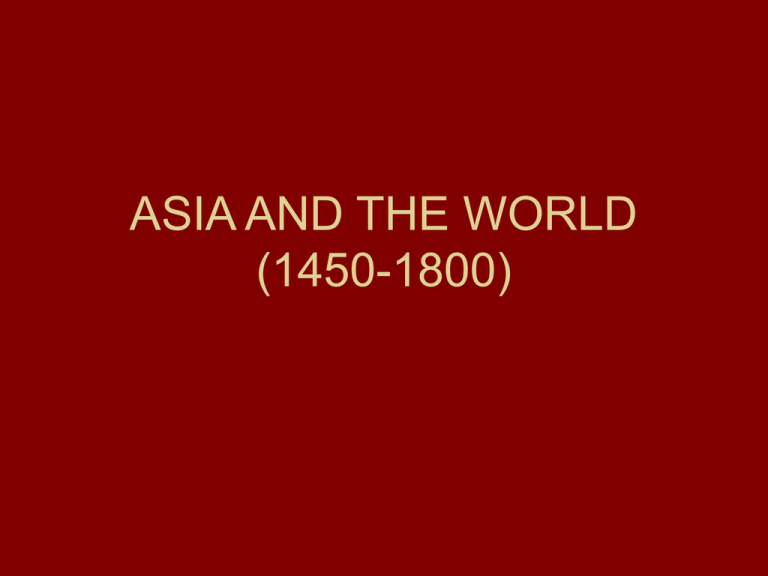
ASIA AND THE WORLD (1450-1800) STRONG EMPIRES • OTTOMAN (12991922) • RUSSIAN (15331917) • SAFAVID-IRAN (1521-1722), • MUGHAL-INDIA (1526-1858), • QING –CHINA (1644-1911 EUROPEAN TRADE AND THE DRAIN OF BULLION European Attempts to reverse the drain: Portuguese (Goa, Macao, Melaka) Dutch in Southeast Asia Mughal Empire and the British in India • MADRAS (1639), BOMBAY (1661), CALCUTTA (1690) • BATTLE OF THE PLASSEY (1757) Battle of the Plassey: Clive meets the Mughal Commander Lord Robert Clive BRITISH COLONIAL RULE IN INDIA-PHASE I (1757-1858) TOOLS • Bureaucracy • Law • Colonial Tax GOALS • Make India pay for its administration • Find something that can be sold in India – Undermining Indian Textiles • Barred from markets controlled by the British • Import of British manufactures duty free • Conversion of fields from food to cash crops • Use India to enter China From Ming to Qing (1644-1911) BRITISH EXPEDITIONS TO CHINA • Commodore Anson (1741) • James Flint (1759) • George McCartney (1792) Lord George Macartney in China (1792) Emperor Qianlong WORLD ECONOMIES COMPARED 1500-1775 1450-1650 Europe Middle East Asia Transformation Econ. Polit. End of feudal relations, Expansion State Ottoman Empire Portug. Dutch in SEA 1450-1650-1750 Europe To America Africa, Asia Absolutism Mercantilism Middle East Asia -Ottoman Empire -Persian Empire Ming to Qing Portug, Dutch in SEA Mughal The Age of Revolution (1750-1850) • Economy (Industrial Revolution) • Politics (American, French Revolutions; Revolutions of 1848) • Science (Enlightenment)
